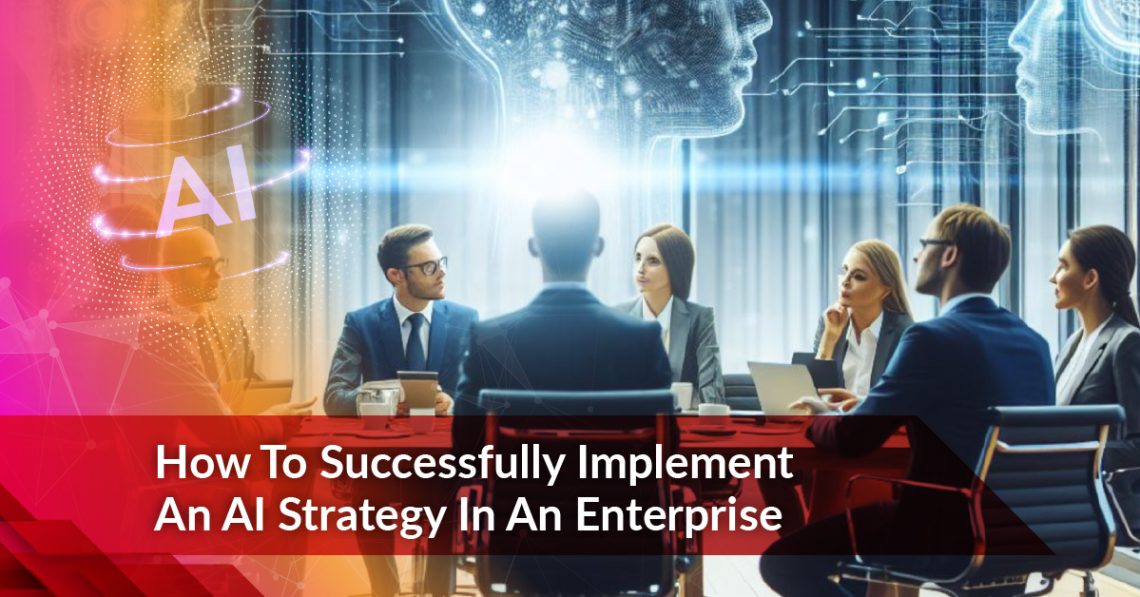More and more enterprises are recognizing the necessity of integrating AI into their operations. However, despite AI’s vast potential, successfully implementing an AI strategy is not an easy task. This article will explore the key steps and best practices for successfully implementing an AI strategy in an enterprise.
1. Define Clear Goals
Before implementing an AI strategy, the enterprise must define its goals. These goals should align with the company’s overall business strategy. Consider the following questions:
- What specific problems do we want AI to solve?
- How can AI improve our operational efficiency or customer satisfaction?
- Are we looking to leverage AI to create new business models?
By defining clear goals, enterprises can ensure that their AI projects are aligned with their strategy, increasing the likelihood of success.
2. Evaluate Existing Data Infrastructure
Data is the foundation of AI, and enterprises must assess their current data infrastructure when implementing an AI strategy. The following aspects should be considered:
- What is the quality of the data? Are there issues with data loss or inconsistency?
- Does the enterprise have the appropriate tools and technologies to collect, store, and process data?
- Is the data compliant with relevant legal and regulatory requirements, particularly concerning privacy and security?
By evaluating the existing data infrastructure, enterprises can identify areas that need improvement to prepare for AI implementation.
3. Develop AI Talent
Successful AI implementation requires professional expertise. Enterprises should consider the following actions:
- Recruit professionals with AI-related skills, including data scientists, machine learning engineers, and AI experts.
- Provide training and development opportunities to help existing employees gain AI knowledge and improve their skills.
- Encourage cross-department collaboration to foster knowledge sharing and cooperation across different areas.
By developing AI talent, enterprises can ensure they have the necessary skills and knowledge to support AI strategy implementation.
4. Start with Small-Scale Projects
For many enterprises, jumping straight into large-scale AI projects may be too risky. Instead, enterprises can start with small-scale projects to gradually validate the value of AI. Consider the following strategies:
- Select specific business scenarios for pilot projects to assess the feasibility and impact of AI.
- Adjust and refine the AI strategy based on feedback from pilot projects.
- Once the pilot projects succeed, expand AI applications to cover more business areas.
Starting with small-scale projects helps enterprises reduce risks and gain valuable experience.
5. Focus on Ethics and Compliance
As AI technology evolves, ethical and compliance issues become increasingly important. Enterprises should focus on the following aspects when implementing an AI strategy:
- Ensure the transparency of AI systems to avoid “black box” issues and build user trust.
- Adhere to relevant laws and regulations, especially regarding data protection and privacy.
- Establish an ethics committee or review board to examine the potential impacts of AI projects and ensure they meet ethical standards.
By focusing on ethics and compliance, enterprises can mitigate potential risks and enhance their social responsibility.
6. Continuously Monitor and Optimize
AI strategy implementation is an ongoing process, and enterprises need to continuously monitor and optimize their AI systems. Consider the following measures:
- Establish key performance indicators (KPIs) to assess the performance and impact of AI systems.
- Regularly collect feedback and make adjustments and improvements based on real-world results.
- Stay updated with the latest AI technologies and industry trends to ensure the enterprise remains competitive.
By continuously monitoring and optimizing, enterprises can ensure the long-term success of their AI strategy.
Conclusion
Successfully implementing an AI strategy in an enterprise requires clear goals, strong data infrastructure, professional talent, small-scale pilot projects, attention to ethics and compliance, and ongoing monitoring and optimization. By following these key steps, enterprises can fully leverage AI technology to enhance operational efficiency, improve customer experience, and remain competitive in the marketplace. The future of AI is full of opportunities, and enterprises should seize this transformative moment to pave the way for future growth.
Are you ready to dive deeper into the topics you love? Visit our website and discover a treasure trove of articles, tips, and insights tailored just for you!





